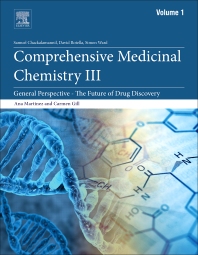Books in Physical sciences and engineering
Books in Physical sciences and engineering
- 1st Edition
- June 8, 2017
- Samahe Sadjadi
- English
- Paperback9 7 8 0 1 2 8 0 3 8 3 6 9
- eBook9 7 8 0 1 2 8 0 3 9 0 5 2

Encapsulated Catalysts
- 1st Edition
- June 7, 2017
- Muhammad Raza Shah + 2 more
- English
- Paperback9 7 8 0 3 2 3 5 2 7 2 9 3
- eBook9 7 8 0 3 2 3 5 2 7 3 0 9

Lipid-Based Nanocarriers for Drug Delivery and Diagnosis
- 1st Edition
- June 7, 2017
- Berend Denkena + 1 more
- English
- Paperback9 7 8 0 1 2 8 1 1 9 3 9 6
- eBook9 7 8 0 1 2 8 1 2 6 0 0 4

Cyber-Physical and Gentelligent Systems in Manufacturing and Life Cycle
- 5th Edition
- June 6, 2017
- Bent Sorensen
- English
- Hardback9 7 8 0 1 2 8 0 2 3 9 0 7
- Paperback9 7 8 0 1 2 8 0 4 5 6 7 1
- eBook9 7 8 0 1 2 8 0 2 6 1 0 6

Renewable Energy
- 1st Edition
- June 6, 2017
- Mohammad Jawaid + 2 more
- English
- Hardback9 7 8 0 0 8 1 0 0 9 5 7 4
- eBook9 7 8 0 0 8 1 0 0 9 6 5 9

Cellulose-Reinforced Nanofibre Composites
- 1st Edition
- June 5, 2017
- Zhouchen Lin + 1 more
- English
- Paperback9 7 8 0 1 2 8 1 2 7 3 1 5
- eBook9 7 8 0 1 2 8 1 2 7 3 2 2

Low-Rank Models in Visual Analysis
- 1st Edition
- June 5, 2017
- Juan I. Soto + 2 more
- English
- Paperback9 7 8 0 1 2 8 0 9 4 1 7 4
- eBook9 7 8 0 1 2 8 1 1 4 5 0 6

Permo-Triassic Salt Provinces of Europe, North Africa and the Atlantic Margins
- 3rd Edition
- June 3, 2017
- Samuel Chackalamannil + 2 more
- English
- Hardback9 7 8 0 1 2 8 0 3 2 0 0 8
- eBook9 7 8 0 1 2 8 0 3 2 0 1 5

Comprehensive Medicinal Chemistry III
- 1st Edition
- June 3, 2017
- Chee Kai Chua + 2 more
- English
- Paperback9 7 8 0 1 2 8 1 3 4 8 9 4
- eBook9 7 8 0 1 2 8 1 3 4 9 0 0

Standards, Quality Control, and Measurement Sciences in 3D Printing and Additive Manufacturing
- 1st Edition
- June 3, 2017
- Mohammad Jawaid + 2 more
- English
- Hardback9 7 8 0 0 8 1 0 0 9 5 9 8
- eBook9 7 8 0 0 8 1 0 0 9 6 6 6

Lignocellulosic Fibre and Biomass-Based Composite Materials